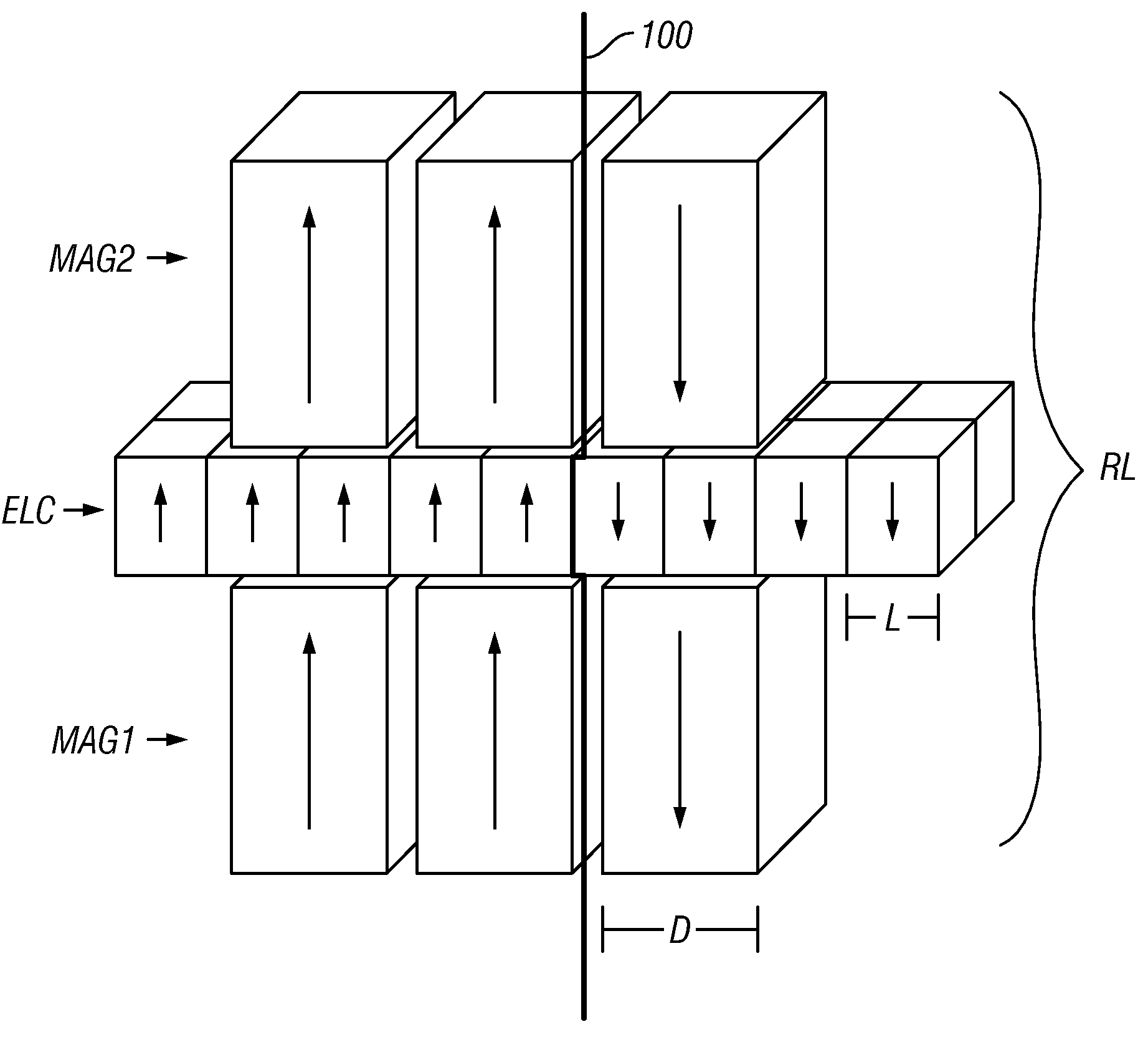Perpendicular magnetic recording medium with laminated magnetic layers separated by a ferromagnetic interlayer for intergranular exchange-coupling enhancement
- Summary
- Abstract
- Description
- Claims
- Application Information
AI Technical Summary
Benefits of technology
Problems solved by technology
Method used
Image
Examples
Embodiment Construction
[0027]The prior art perpendicular magnetic recording medium wherein the RL includes an ECL on top of a single ferromagnetic layer (MAG) is depicted in schematic cross-section in FIG. 3A. The MAG is typically a granular Co cobalt alloy, such as a CoPt or CoPtCr alloy, with a suitable segregant such as an oxide or oxides of one or more of Si, Ta, Ti, Nb, Cr, V and B, with its easy axis of magnetization being oriented out-of-plane, i.e., generally greater than 45 degrees relative to the surface of the substrate. The ECL is deposited directly on top of and in contact with the MAG. The ferromagnetic alloy in the ECL has significant intralayer coupling of its grains. The material of the ECL may be a Co alloy, such as a CoCrPtB alloy, that preferably does not include any oxide or if it does, an amount substantially less than the amount of oxide in the MAG. The Cr and B in the ECL segregate to a much smaller extent than would an oxide, so that there are small segregation regions or sub-grai...
PUM
 Login to View More
Login to View More Abstract
Description
Claims
Application Information
 Login to View More
Login to View More - R&D
- Intellectual Property
- Life Sciences
- Materials
- Tech Scout
- Unparalleled Data Quality
- Higher Quality Content
- 60% Fewer Hallucinations
Browse by: Latest US Patents, China's latest patents, Technical Efficacy Thesaurus, Application Domain, Technology Topic, Popular Technical Reports.
© 2025 PatSnap. All rights reserved.Legal|Privacy policy|Modern Slavery Act Transparency Statement|Sitemap|About US| Contact US: help@patsnap.com



